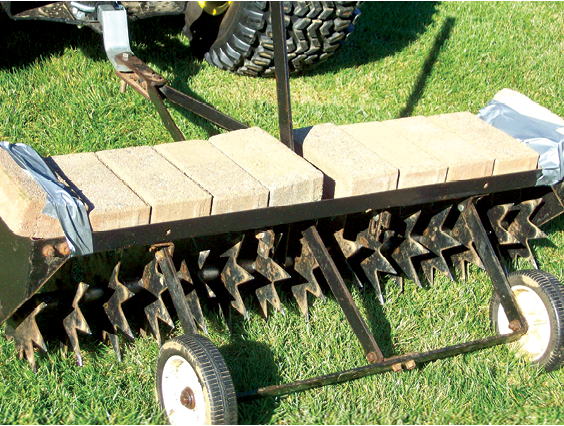A yard can become hard packed from frequently walking or playing games on it or lawn mowing. A hard-packed lawn may not efficiently receive much needed water, air, nutrients, seeds, etc. Aerating involves cutting little openings in the soil to create small reservoirs, which will bring benefits of water, oxygen, fertilizer, etc. down into the root zone.
Indications that
a lawn needs aerating:
Lawn is full of water after the rain
Frequent driving on the lawn with a car or other transport
If it’s hard to stick a pencil or similar item into the soil’s surface
It’s hard clay soil
Bare or thin grass areas
Soil compaction
When to use
a lawn aerator?
1. If possible, remove weeds before using a lawn aerator. Otherwise, weeds will be chopped and spreading may occur.
2. A well-established lawn can take aeration while a new lawn may get abused.
3. One of the best times for aerating your lawn is before reseeding or fertilizing. The aerator will open the ground for air, nutrients, seeds, etc.
4. Avoid using lawn aerators during dry and hot spells.
5. Use a lawn aerator when the soil is moist but not overly saturated/muddy.
Lawn aerators come in hand-held varieties with or without a motor. In the above photo, Rick tows his spike aerator attachment on a sit-down lawn mower.
“And forget not that the earth delights to feel your bare feet and the winds long to play with your hair.”
~ Khalil Gibran,
Lebanese-American writer, and poet.
